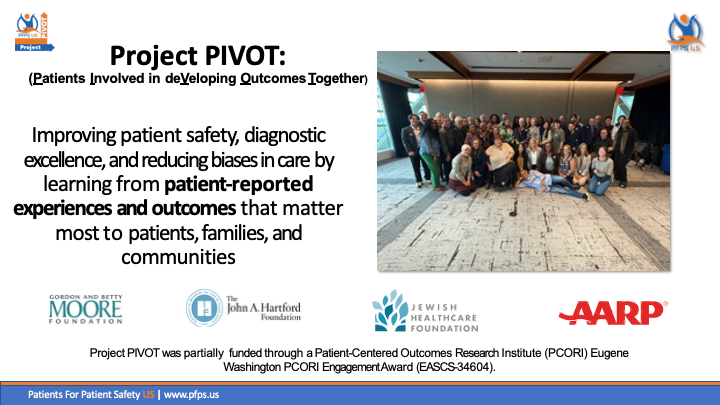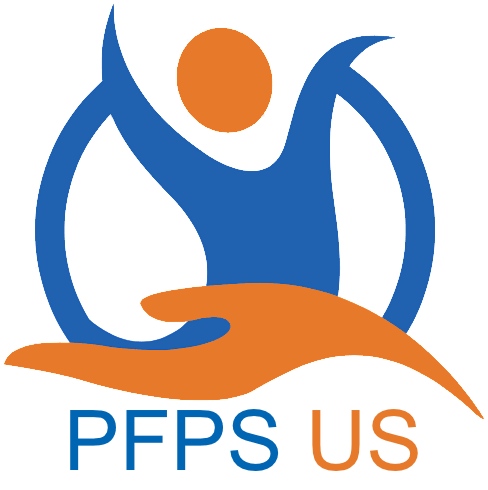PROJECT PIVOT
Project PIVOT Latest Webinar
November 06, 2025
Measuring What Matters to Patients
Project PIVOT: Patients Involved in deVeloping Outcomes Together
Project PIVOT is a novel, patient-led initiative to advance the integration of patient-identified and prioritized patient-reported outcomes (PROs) and patient-reported experiences (PREs) that address patient safety, diagnostic accuracy, and timeliness, and discrimination/bias into Patient-Centered Comparative Clinical Effectiveness Research (CER) and national and organizational quality assessment survey tools (e.g., HCAHPS, PREMs, and PROMs). The leadership team includes Sue Sheridan, President and CEO, Martin Hatlie, Director of Advocacy and Policy, Armando Nahum, Chief Operating Officer, and PFPS US Champions, Suz Schrandt and Vonda Vaden Bates.
Project PIVOT Leadership Team
Meet the Project PIVOT Community
Project PIVOT brings together a diverse community of patients, family members, community leaders, healthcare systems, researchers, and other key stakeholders. Their lived experiences and expertise are vital to the success of the initiative and will continue to shape and inform future Project PIVOT efforts.
Priority Population Patient Leaders
PFPS US is grounded in the belief that meaningful change in healthcare begins with patients and families. Project PIVOT reflects this commitment by engaging patient leaders with lived experience to guide efforts focused on the priority populations at the heart of the initiative, including older adults, mothers of color, and people with disabilities.
Health Care System Leader
PFPS US recognizes the pivotal role healthcare systems play in advancing patient safety and health equity through the implementation of effective measures.
Project PIVOT actively engages healthcare professionals and system leaders to identify and prioritize PREs and PROs that are most valuable for enhancing patient safety, diagnostic accuracy, and addressing experiences of discrimination and bias. Through collaborative efforts, the project seeks to bridge the gap between patient experiences and healthcare system practices, ensuring that patient voices inform quality improvement initiatives.

Divvy Upadhyay, MD, MPH
Geisinger Health
Research Advisors
At PFPS US, we actively seek collaborations with researchers and academic institutions to co-develop initiatives that enhance patient safety, ensure accurate and timely diagnoses, and promote equity in healthcare. Through Project PIVOT, we've partnered with esteemed researchers who value patient-partnered research, aiming to drive improvements in care that is both safe and more equitable.
If you are interested in joining Project PIVOT,
please click the button below.
For sponsoring opportunities,
please click the button below.
Project PIVOT Funders
Project PIVOT was partially funded through a Patient-Centered Outcomes Research Institute (PCORI) Eugene Washington PCORI Engagement Award (EASCS-34604).
























